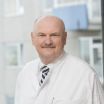(Press-News.org) People who have suffered spinal cord injuries are often susceptible to bladder infections, and those infections can cause kidney damage and even death.
New UCLA research may go a long way toward solving the problem. A team of scientists studied 10 paralyzed rats that were trained daily for six weeks with epidural stimulation of the spinal cord and five rats that were untrained and did not receive the stimulation. They found that training and epidural stimulation enabled the rats to empty their bladders more fully and in a timelier manner.
The study was published in the online journal PLOS ONE.
"The big deal here is the immediate effect," said V. Reggie Edgerton, a distinguished professor of integrative biology and physiology, neurobiology, and neurosurgery at UCLA and senior author of the research. "There may be a way that when people have bladder problems, you can turn the stimulator on and they can release urine at will. This strategy could have a major impact in improving the quality of life and longevity of human patients."
Nearly 1.3 million Americans have spinal cord injuries, and those with complete spinal cord injuries typically have two to six bladder infections per year. Edgerton said the advance could eventually treat or even cure one of their highest priority health concerns.
"We're not saying it will restore this part of their lives to normal, but we think it will lead to a significant improvement in quality of life," he said.
The researchers also found that after they filled a rat's bladder with saline, and turned on an epidural electrical stimulator, the rat released urine within 90 seconds, said lead author Parag Gad, an assistant researcher in Edgerton's laboratory.
The research was funded by the National Institutes of Health's National Institute of Biomedical Imaging and Bioengineering (grants R01EB007615 and R01NS062009) and the Christopher and Dana Reeve Foundation. Other co-authors were Dr. Daniel Lu, assistant professor of neurosurgery at the David Geffen School of Medicine at UCLA; researcher Roland Roy and project scientist Hui Zhong, both of Edgerton's laboratory; and Yury Gerasimenko, professor and director of the laboratory of movement physiology at Russia's Pavlov Institute in St. Petersburg and a researcher in Edgerton's lab.
Edgerton believes there is a connection between the neural networks that control walking and bladder function, and is planning to investigate the connection. To research bladder control with human subjects, his team plans to place electrodes on the skin over a critical part of the spinal cord and evaluating their improvement.
Edgerton and colleagues from the University of Louisville reported in the medical journal Brain in April a fundamentally new intervention strategy that enabled four young men who had been paralyzed for years to move their legs, hips, ankles and toes as a result of epidural electrical stimulation of the spinal cord, and were able to execute voluntary movements immediately following the implantation and activation of the stimulator.
In that study, researchers used a stimulator to deliver a continuous electrical current to the participants' lower spinal cords, mimicking signals the brain normally transmits to initiate movement. The electrical current was applied at varying frequencies and intensities to specific locations on the lumbosacral spinal cord, corresponding to the dense neural bundles that largely control the movement of the hips, knees, ankles and toes. Once the signal was triggered, the men's spinal cords reengaged their neural networks to control and direct muscle movements.
"The circuitry in the spinal cord is remarkably resilient," said Edgerton, who has been conducting fundamental research in this area for 38 years and is a member of the Reeve Foundation International Research Consortium on Spinal Cord Injury. "Once you get them up and active, many physiological systems that are intricately connected and that were dormant come back into play."
INFORMATION:
More information about epidural stimulation research is available through the Christopher and Dana Reeve Foundation.
UCLA research could help improve bladder function among people with spinal cord injuries
Study addresses a critical health problem for those who are paralyzed
2014-10-17
ELSE PRESS RELEASES FROM THIS DATE:
First step: From human cells to tissue-engineered esophagus
2014-10-17
In a first step toward future human therapies, researchers at The Saban Research Institute of Children's Hospital Los Angeles have shown that esophageal tissue can be grown in vivo from both human and mouse cells. The study has been published online in the journal Tissue Engineering, Part A.
The tissue-engineered esophagus formed on a relatively simple biodegradable scaffold after the researchers transplanted mouse and human organ-specific stem/progenitor cells into a murine model, according to principal investigator Tracy C. Grikscheit, MD, of the Developmental Biology ...
High-fat meals could be more harmful to males than females, according to new obesity research
2014-10-17
LOS ANGELES (Oct. 16, 2014) – Male and female brains are not equal when it comes to the biological response to a high-fat diet. Cedars-Sinai Diabetes and Obesity Research Institute scientist Deborah Clegg, PhD, and a team of international investigators found that the brains of male laboratory mice exposed to the same high-fat diet as their female counterparts developed brain inflammation and heart disease that were not seen in the females.
"For the first time, we have identified remarkable differences in the sexes when it comes to how the body responds to high-fat ...
Divide and conquer: Novel trick helps rare pathogen infect healthy people
2014-10-17
New research into a rare pathogen has shown how a unique evolutionary trait allows it to infect even the healthiest of hosts through a smart solution to the body's immune response against it.
Scientists at the University of Birmingham have explained how a particular strain of a fungus, Cryptococcus gattii, responds to the human immune response and triggers a 'division of labour' in its invading cells, which can lead to life-threatening infections.
Once inhaled, the pathogen can spread through the body to cause pneumonia or meningitis. The outbreak strain of this fungus ...
New pill-only regimens cure patients with hardest-to-treat hepatitis C infection
2014-10-17
(Vienna, October 17, 2014) Two new pill-only regimens that rapidly cure most patients with genotype 1 hepatitis C (HCV) infection could soon be widely prescribed across Europe. Two recently-published studies1,2 confirmed the efficacy and safety of combination therapy with two oral direct-acting antiviral agents (DAAs), with around 90% of patients cured after just 12-weeks of treatment.
At the 22nd United European Gastroenterology Week (UEG Week 2014) in Vienna, Austria, Professor Michael P. Manns from Hannover Medical School in Germany will be presenting this data and ...
Explosion first evidence of a hydrogen-deficient supernova progenitor
2014-10-17
A group of researchers led by Melina Bersten of the Kavli Institute for the Physics and Mathematics of the Universe recently presented a model that provides the first characterization of the progenitor for a hydrogen-deficient supernova. Their model predicts that a bright hot star, which is the binary companion to an exploding object, remains after the explosion. To verify their theory, the group secured observation time with the Hubble Space Telescope (HST) to search for such a remaining star. Their findings, which are reported in the October 2014 issue of The Astronomical ...
NASA's Hubble finds extremely distant galaxy through cosmic magnifying glass
2014-10-16
Peering through a giant cosmic magnifying glass, NASA's Hubble Space Telescope has spotted a tiny, faint galaxy -- one of the farthest galaxies ever seen. The diminutive object is estimated to be more than 13 billion light-years away.
This galaxy offers a peek back to the very early formative years of the universe and may just be the tip of the iceberg.
"This galaxy is an example of what is suspected to be an abundant, underlying population of extremely small, faint objects that existed about 500 million years after the big bang, the beginning of the universe," explained ...
NASA begins sixth year of airborne Antarctic ice change study
2014-10-16
NASA is carrying out its sixth consecutive year of Operation IceBridge research flights over Antarctica to study changes in the continent's ice sheet, glaciers and sea ice. This year's airborne campaign, which began its first flight Thursday morning, will revisit a section of the Antarctic ice sheet that recently was found to be in irreversible decline.
For the next several weeks, researchers will fly aboard NASA's DC-8 research aircraft out of Punta Arenas, Chile. This year also marks the return to western Antarctica following 2013's campaign based at the National Science ...
NASA spacecraft provides new information about sun's atmosphere
2014-10-16
NASA's Interface Region Imaging Spectrograph (IRIS) has provided scientists with five new findings into how the sun's atmosphere, or corona, is heated far hotter than its surface, what causes the sun's constant outflow of particles called the solar wind, and what mechanisms accelerate particles that power solar flares.
The new information will help researchers better understand how our nearest star transfers energy through its atmosphere and track the dynamic solar activity that can impact technological infrastructure in space and on Earth. Details of the findings appear ...
New Univeristy of Virginia study upends current theories of how mitochondria began
2014-10-16
Parasitic bacteria were the first cousins of the mitochondria that power cells in animals and plants – and first acted as energy parasites in those cells before becoming beneficial, according to a new University of Virginia study that used next-generation DNA sequencing technologies to decode the genomes of 18 bacteria that are close relatives of mitochondria.
The study appears this week in the online journal PLOS One, published by the Public Library of Science. It provides an alternative theory to two current theories of how simple bacterial cells were swallowed ...
Shrinking resource margins in Sahel region of Africa
2014-10-16
The need for food, animal feed and fuel in the Sahel belt is growing year on year, but supply is not increasing at the same rate. New figures from 22 countries indicate falling availability of resources per capita and a continued risk of famine in areas with low 'primary production' from plants. Rising temperatures present an alarming prospect, according to a study from Lund University in Sweden.
The research has investigated developments between the years 2000 and 2010 in the Sahel belt, south of the Sahara Desert. Over this ten-year period, the population of the region ...
LAST 30 PRESS RELEASES:
Why nail-biting, procrastination and other self-sabotaging behaviors are rooted in survival instincts
Regional variations in mechanical properties of porcine leptomeninges
Artificial empathy in therapy and healthcare: advancements in interpersonal interaction technologies
Why some brains switch gears more efficiently than others
UVA’s Jundong Li wins ICDM’S 2025 Tao Li Award for data mining, machine learning
UVA’s low-power, high-performance computer power player Mircea Stan earns National Academy of Inventors fellowship
Not playing by the rules: USU researcher explores filamentous algae dynamics in rivers
Do our body clocks influence our risk of dementia?
Anthropologists offer new evidence of bipedalism in long-debated fossil discovery
Safer receipt paper from wood
Dosage-sensitive genes suggest no whole-genome duplications in ancestral angiosperm
First ancient human herpesvirus genomes document their deep history with humans
Why Some Bacteria Survive Antibiotics and How to Stop Them - New study reveals that bacteria can survive antibiotic treatment through two fundamentally different “shutdown modes”
UCLA study links scar healing to dangerous placenta condition
CHANGE-seq-BE finds off-target changes in the genome from base editors
The Journal of Nuclear Medicine Ahead-of-Print Tip Sheet: January 2, 2026
Delayed or absent first dose of measles, mumps, and rubella vaccination
Trends in US preterm birth rates by household income and race and ethnicity
Study identifies potential biomarker linked to progression and brain inflammation in multiple sclerosis
Many mothers in Norway do not show up for postnatal check-ups
Researchers want to find out why quick clay is so unstable
Superradiant spins show teamwork at the quantum scale
Cleveland Clinic Research links tumor bacteria to immunotherapy resistance in head and neck cancer
First Editorial of 2026: Resisting AI slop
Joint ground- and space-based observations reveal Saturn-mass rogue planet
Inheritable genetic variant offers protection against blood cancer risk and progression
Pigs settled Pacific islands alongside early human voyagers
A Coral reef’s daily pulse reshapes microbes in surrounding waters
EAST Tokamak experiments exceed plasma density limit, offering new approach to fusion ignition
Groundbreaking discovery reveals Africa’s oldest cremation pyre and complex ritual practices
[Press-News.org] UCLA research could help improve bladder function among people with spinal cord injuriesStudy addresses a critical health problem for those who are paralyzed






